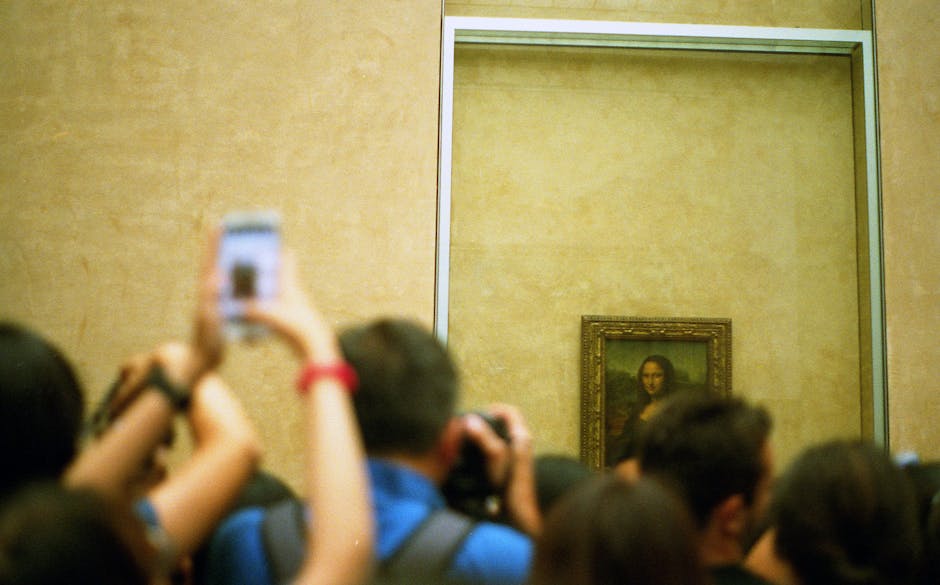Museums are often seen as fortresses of culture, safeguarding priceless artifacts that narrate the story of human history. Yet, over the years, these sanctuaries of art and history have been targeted by some of the most daring heists ever recorded. From the iconic Louvre in Paris to the Grünes Gewölbe in Dresden, these thefts have not only shocked the world but also exposed the vulnerabilities of even the most secure institutions. Here’s a closer look at some of the biggest museum heists that have left an indelible mark on history.
The Louvre: The Theft of the Mona Lisa (1911)
The most famous museum heist of all time took place at the Louvre in 1911 when Leonardo da Vinci’s Mona Lisa was stolen. Vincenzo Peruggia, an Italian handyman who had worked at the museum, hid in a closet overnight and walked out with the painting the next morning, concealed under his coat. The theft went unnoticed for 24 hours, and the painting was missing for two years before Peruggia was caught trying to sell it in Italy. This heist catapulted the Mona Lisa to global fame, making it the most recognizable painting in the world.
Isabella Stewart Gardner Museum: The $500 Million Heist (1990)
In 1990, two men disguised as police officers entered Boston’s Isabella Stewart Gardner Museum and carried out one of the most significant art thefts in history. They stole 13 pieces, including works by Vermeer, Rembrandt, and Degas, valued at over $500 million. Despite decades of investigations, the artworks remain missing, and the case remains unsolved. The museum still displays the empty frames as a haunting reminder of the theft.
The Kunsthal Museum: The Overnight Raid (2012)
In 2012, thieves broke into the Kunsthal Museum in Rotterdam, Netherlands, and stole seven masterpieces, including works by Picasso, Monet, and Matisse. The heist took just three minutes, and the stolen art was valued at over $100 million. Although the thieves were eventually caught, the paintings were reportedly burned by one of the perpetrators’ mothers in an attempt to destroy evidence. This incident raised serious questions about museum security protocols.
The National Museum of Anthropology: The Mayan Jade Mask (1985)
Mexico’s National Museum of Anthropology fell victim to a daring heist in 1985 when thieves stole the priceless Mayan Jade Mask. Dating back to the 7th century, the mask was one of the most significant artifacts in the museum’s collection. The thieves bypassed security systems and escaped with the artifact, which was eventually recovered in 1990 after an anonymous tip led authorities to its location.
The Grünes Gewölbe: The Dresden Jewel Heist (2019)
One of the most recent and shocking museum heists occurred in 2019 at the Grünes Gewölbe (Green Vault) in Dresden, Germany. Thieves broke into the museum and stole a trove of 18th-century jewels, including diamonds, rubies, and sapphires, valued at over $1 billion. The thieves used a fire to disable the museum’s security systems and escaped with the loot in under five minutes. While some of the stolen items have been recovered, many remain missing, and the investigation continues.
The Bigger Picture: Why Museum Heists Happen
Museum heists are often driven by a combination of factors, including the astronomical value of the artifacts, the challenge of bypassing security, and the allure of owning a piece of history. These thefts also expose the vulnerabilities of even the most secure institutions. While many museums have since upgraded their security measures, the threat of theft remains ever-present.
These heists not only result in the loss of cultural treasures but also leave a void in our shared heritage. While some stolen artifacts are eventually recovered, others are lost forever, becoming a tragic footnote in history. As museums continue to safeguard their collections, the stories of these heists serve as a stark reminder of the lengths to which some will go to possess the priceless.
The next time you visit a museum, take a moment to appreciate the security measures in place—they’re there for a reason. And remember, behind every masterpiece lies a story, sometimes one of intrigue, theft, and loss.




